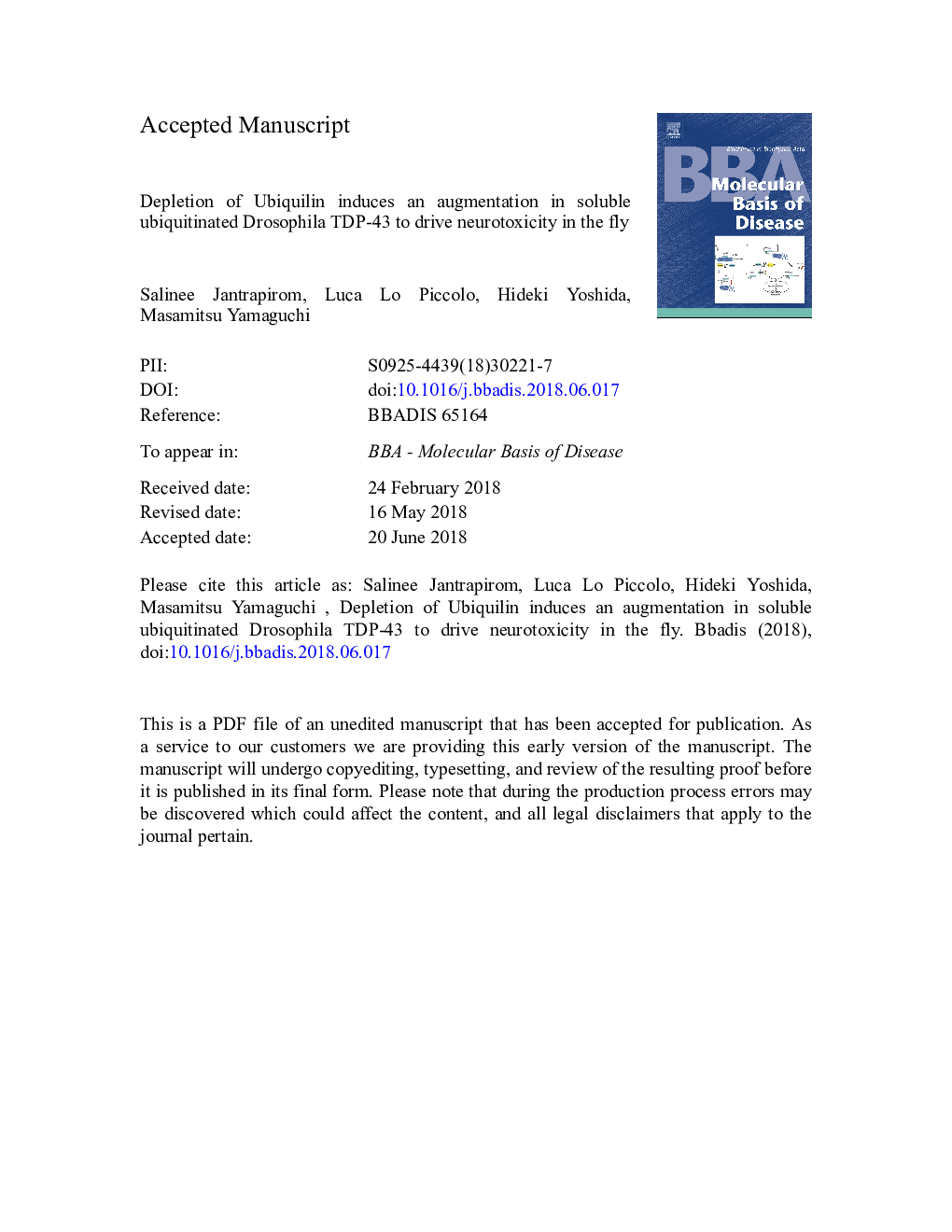| Article ID | Journal | Published Year | Pages | File Type |
|---|---|---|---|---|
| 8258357 | Biochimica et Biophysica Acta (BBA) - Molecular Basis of Disease | 2018 | 30 Pages |
Abstract
The proteostasis machinery has critical functions in metabolically active cells such as neurons. Ubiquilins (UBQLNs) may decide the fate of proteins, with its ability to bind and deliver ubiquitinated misfolded or no longer functionally required proteins to the ubiquitin-proteasome system (UPS) and/or autophagy. Missense mutations in UBQLN2 have been linked to X-linked dominant amyotrophic lateral sclerosis with frontotemporal dementia (ALS-FTD). Although aggregation-prone TAR DNA-binding protein 43 (TDP-43) has been recognized as a major component of the ubiquitin pathology, the mechanisms by which UBQLN involves in TDP-43 proteinopathy have not yet been elucidated in detail. We previously characterized a new Drosophila Ubiquilin (dUbqn) knockdown model that produces learning/memory and locomotive deficits during the proteostasis impairment. In the present study, we demonstrated that the depletion of dUbqn markedly affected the expression and sub-cellular localization of Drosophila TDP-43 (TBPH), resulting in a cytoplasmic ubiquitin-positive (Ub+) TBPH pathology. Although we found that the knockdown of dUbqn widely altered and affected the turnover of a large number of proteins, we herein showed that an augmented soluble cytoplasmic Ub+-TBPH is as a crucial source of neurotoxicity following the depletion of dUbqn. We demonstrated that dUbqn knockdown-related neurotoxicity may be rescued by either restoring the proteostasis machinery or reducing the expression of TBPH. These novel results extend our knowledge on the UBQLN loss-of-function pathomechanism and may contribute to the identification of new therapeutics for ALS-FTD and aging-related diseases.
Keywords
Related Topics
Life Sciences
Biochemistry, Genetics and Molecular Biology
Ageing
Authors
Salinee Jantrapirom, Luca Lo Piccolo, Hideki Yoshida, Masamitsu Yamaguchi,
